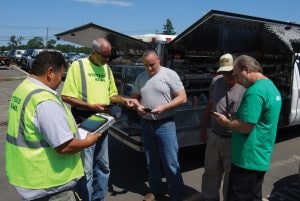A strong safety culture exists when safety is the #1 priority of everyone in the organization. The use of social media, along with other communication tools, can promote and reinforce safe behavior.
By Will Flower
Smart phones, tablets and computers are part of our everyday lives. To power the technology, there are many applications (apps) that allow people to connect with each other and to search and share information.
Most employees use social media and it makes good sense to use social media to promote workplace safety. Apps like Facebook, Instagram, Linked-In, YouTube, Whats App, Twitter and many others, provide safety managers with a variety of communication tools that can be used to influence employees to be safe.
While safety newsletters, e-mails, flyers and safety meetings are all still important, social media provides safety managers with another effective communication tool. The advantages of social media is that it is cheap, fast and simple to use. That said, the use of social media does require a strategic plan and proper management to ensure the right messages are being broadcast to the right audience.

Photo courtesy of Will Flower.
Engaging Employees
Facebook, Twitter, LinkedIn, WhatsApp and others are all familiar names of apps that can be used to share information, exchange messages, provide comments and post information about safety in the workplace. The key is to get the messages onto platforms where employees are hanging out. Another way to reach employees is to set up online groups where employees can share safety suggestions. Once a group is formed, participants can post safety questions and respond with suggestions or recommendations. Posting information that is fun, fresh and relevant is important to keep employees engaged. Photos and short video clips will help attract and maintain a worker’s attention.
It is also important to understand the devices that employees use to receive the information. In the case of Facebook, more than 90 percent of traffic comes from mobile devices. Therefore, the apps you use should be mobile-friendly.
The following are some of the more common apps that allow you to connect with workers:
• Twitter—A simple communication medium, users sign up for a Twitter account and post “tweets,” which are short messages. All messages are visible to the public by default; however, members can limit views to their “followers,” (those who have signed up to follow a particular member). Even though Twitter messages are limited, it is still a good platform to disseminate simple safety messages to followers.
• LinkedIn—A professional networking app, there are a number of safety networking groups that provide excellent insight on safety issues. Participants can follow groups, companies and individuals who post safety information.
• Facebook—Currently the most widely used of all the social media with more than 2 billion monthly users. With the Facebook App, you can create a group for employees to exchange safety ideas. If the group is a “closed” group, the messages posted will only be available to those who have been granted access to the group. Keeping messages short and interesting will help get employees to see your posts.
• WhatsApp—A messaging app that allows the formation of large groups in which information can be shared. Regular posts to the group will allow members of the group to comment on and provide additional information. New subjects can be regularly added for the group to see.
Safety managers should continually monitor communication tools to ensure safety messages are effectively delivered to employees. You can tweet, post and blog all you want, but if no one is receiving the message, it is a waste of time and resources. The key is to monitor posts and see what is working. The simplest way to do this is to talk with employees. Ask if they are seeing safety messages. More importantly, ask for recommendations from employees about topics to cover and other platforms that can be used to share information.
The Importance of Safety
Strategically integrating social media into your safety program will help to promote safety. However, social media is just one way of communicating. To ensure the successful distribution of safety messages to all employees, safety managers should use a variety of communication tools to promote and educate workers about the importance of safety for the solid waste and recycling industry. | WA
Next month’s Safety Brief will provide information on safety initiatives that work.
Tips for Online Communication
Social media can be an excellent method for communicating and sharing information. The following are some basic tips for online communication.
• Be short and to the point.
• Avoid posting when drivers are working on a route. Consider sharing information during the early evening or early morning so as not to distract drivers from their task.
• Make sure your messages are appropriate. Use common sense. Remember, everyone may read your message. Never post anything that you would not want to have read or said in church or a courtroom.
• Avoid spam distributions (sending messages to everyone). Targeted and strategic messaging is best.
• Use good grammar. Check spelling and punctuation prior to hitting the send or post button.
• Avoid using all capital letters (which is seen as shouting or yelling).
• Make messages relevant and interesting.
Using these tips will help to broadcast messages that are heard.
Will Flower is the Vice President of Corporate and Public Affairs at Winters Bros. Waste Systems. Will has 36 years of experience in the area of solid waste management and environmental protection. He has held operational and executive leadership positions at the Director’s Office of the Illinois Environmental Protection Agency, Waste Management, Inc., Republic Services. Inc. and Green Stream Recycling. Share your safety tip. Submit your suggestions to Will Flower at [email protected].
